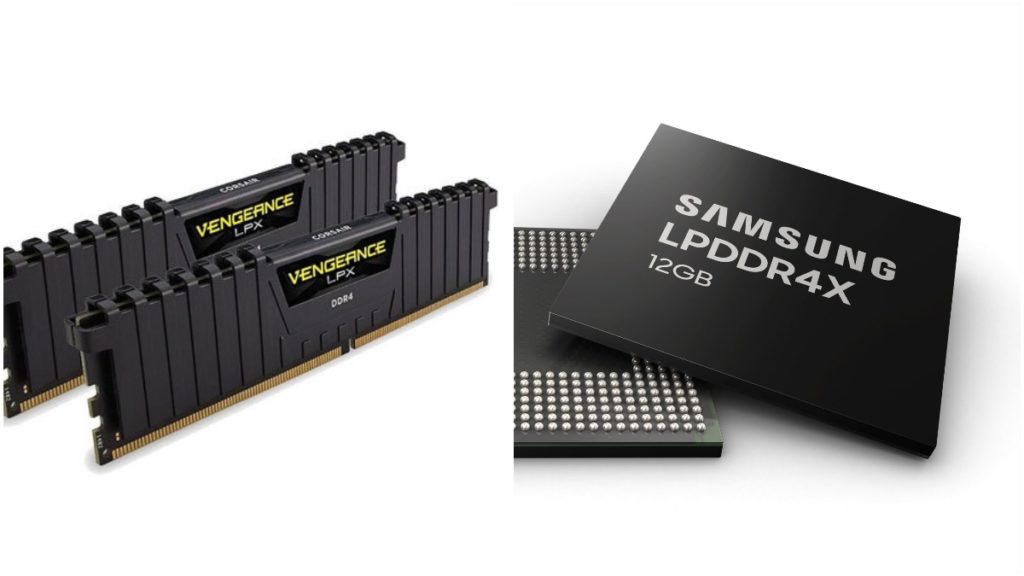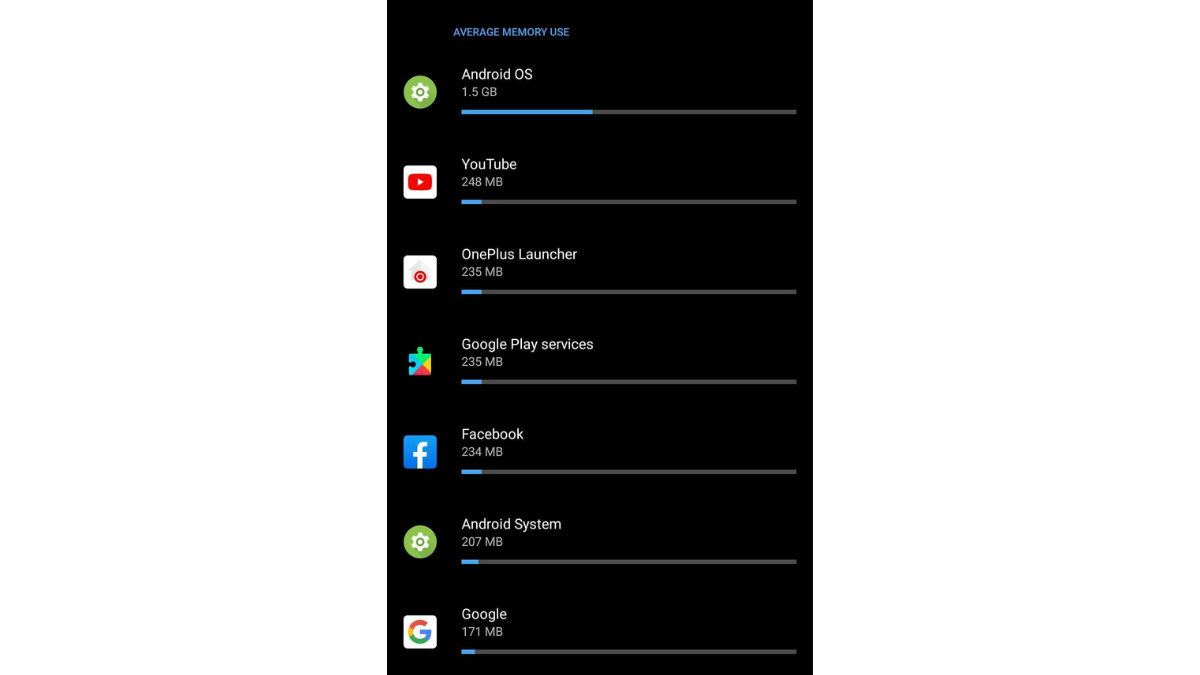Modern flagship smartphones in 2020 come with more RAM than your average gaming laptop. High-end smartphones like OnePlus 8 Pro, Samsung Galaxy Note 20 Ultra, and ASUS ROG Phone 3 are available in 12GB RAM options; meanwhile, a laptop like the AUS TUF Gaming F15 comes with 8GB memory. There are multiple reasons including, software and app optimization, type of memory, etc., responsible for such a trend.
Here’s why smartphones need more RAM than an average PC.
High-End Smartphones Have More RAM Than A PC

DDR4 And LPDDR4 RAM Explained
First of all, the type of RAM in smartphones and a PC is different. Smartphones use a Low Power Double Data Rate or LPDDR RAM, and as the name suggests, this type of memory is designed to operate at low power. For instance, smartphones nowadays use either LPDDR4 or LPDDR5 RAM. Each new iteration of LPDDR RAM brings along with its performance and efficiency gains, meaning LPDDR5 will have better performance and consume less power than LPDDR4. Therefore, they are usually used in mobile devices like some ultrabooks, tablets, and in this case, high-end smartphones.
Meanwhile, a desktop PC or a gaming laptop uses Double Data Rate or DDR RAM. Since 2014, DDR4 has been the standard RAM used in several mainstream desktop PCs and laptops. The next iteration, DDR5 RAM, will most likely crowd the market in 2021. Furthermore, each new iteration of DDR RAM consumes less power and offers more performance than the older generation.
The function of both the memory types is absolutely the same. Whenever you open an app, it doesn’t matter if it’s on your PC or your smartphone; the memory allows you to temporarily store that program and switch between different programs in the background.
LPDDR4 Vs LPDDR5 Vs DDR4 Vs DDR5 RAM Performance, Pros, And Cons Compared
Here’s a quick look at the performance difference between different types of RAM.
| LPDDR4 | LPDDR5 | DDR4 | DDR5 | |
| Voltage used (volt) | 1.1 | 0.5 | 1.2 | 1.1 |
| Data Transfer Speed (MT/s) | 3200 | 6400 | 2133-3200 | 3200-6400 |
Between the LPDDR4 and LPDDR5 exists the LPDDR4X RAM. It is an upgraded version of LPDDR4 RAM, where the X may stand for “extended” or “extra.” The LPDDR4X uses 0.6 volts of voltage, around 50% less than LPDDR4, and has a data transfer speed ranging from 3200 to 4267 MT/s. If you’re wondering what’s the difference between MT/s (Mega Transfers per Second) and MHz, then Simply put, MT/s is the more accurate way of measuring memory speed than MHz.
You can see that difference between LPDDR4 and LPDDR5 RAM is huge. Meanwhile, the DDR4 and DDR5 RAM represent a major difference between performance, but the power efficiency numbers are relatively low.
Furthermore, here’s a pros and cons comparison between the two different types of RAM.
| LPDDR | DDR |
| Soldered to the board | Not soldered to the board. |
| Consumes less power | Consumes more power |
| Non-upgradable | Easily upgradable |
Here, one thing to note is that PC RAM is faster than smartphone RAM any day. So, it’s not that two devices having same memory size will deliver similar performance.
RAM Usage In Modern Smartphones
Modern-day smartphones have more RAM because of two main reasons. The first reason being newer apps and mobile games require more memory to run smoothly. For example, Asphalt 9 consumes around 1GB of LPDDR4 RAM. The recently launched cross-platform open-world RPG Gensin Impact needs around 1GB of system memory to run smoothly, according to its official requirement.
The second reason is software optimization. A ton of mobile phones nowadays run a modified version of the Android operating system, which consumes a percentage of the system memory from the get-go. You can see the amount of memory used by different apps on my OnePlus 7T smartphone in the screenshot below. On an average system, apps can eat around 2GB of 3GB of RAM on the device.

Smartphones need more RAM because they are becoming more powerful and capable of running graphically intensive applications. Let us take the above mentioned Genshin Impact as an example. The game struggles to maintain a steady 30 FPS on my PS4 console but runs at a butter-smooth 60 FPS on my Oneplus 7T Smartphone at Ultra graphics settings.
That’s not to say that a smartphone can’t get away with 4GB or 6GB of RAM. Apple’s smartphones prove that through clever optimization, you can run a high number of applications on a smartphone with 4GB of RAM. When I talk about optimization, I specifically mean to reduce the RAM usage by the operating system and the UI. Because as we saw in the screenshot above, these two factors permanently consume a lot of system memory.
Apple’s two best-selling smartphones, the iPhone XR and the iPhone 11, had 3GB and 4GB of system memory, respectively. And they are some of the fastest smartphones on the market.
Does Software Optimisation Affect Smartphone RAM?
Software optimization does affect smartphone RAM in quite a significant way. According to a recent memory test done by the YouTuber TechNick, the OnePlus 7T 8GB version defeated the OnePlus 8 Pro 12 GB version. In the test, the YouTuber opened and switched between 50 android apps on both phones. At the end of the test, the OnePlus 7T was able to keep open 29 apps, beating the OnePlus 8 Pro, which was only able to keep 25 apps open in the background.
The YouTuber credited this performance difference to the higher number of patches that the OnePlus 7T has received over the year. Meanwhile, the OnePlus 8T is a new entry in the series and hasn’t received enough updates to fully optimize its memory usage.
Nonetheless, the test clearly indicates that software optimization does play a big role in RAM management and just having more memory is no compensation for the lack of it.
Could be a marketting gimmick as well
In the case of Android, the varying range of hardware on which it runs, make the software optimization even harder. Also, having a 12GB or 16GB memory chip inside a smartphone could be justified in the case of Samsung devices like Galaxy S and Note Series, which offer Dex – a full blown desktop mode that can replace a traditional PC for many everyday tasks.
However, we can’t ignore that putting a humongous amount of memory in a smartphone could be a marketing move some OEMs are resorting to.
Can High-End Smartphones Replace Desktop PCs?
As smartphones continue to get new and powerful SoCs with each year, we will see more cross-platform applications. Although smartphones can’t yet replace the ergonomics of working on a desktop with a large screen, they can certainly run the same applications with almost the same performance. Furthermore, Apple recently unveiled its brand new ARM-based M1 chips for its mainstream Macbooks, bringing the mobile and PC platform even closer.
So high-end smartphones have more RAM than PCs because such high RAM is needed to easily store and run the ever-increasing number of applications on these devices. In 2020, on average, 60 to 90 apps are installed on a smartphone, and as we move ahead, the number of apps will only increase.
The post Why Flagship Phones Seem To Have More RAM Than An Average PC? appeared first on Fossbytes.
Why Flagship Phones Seem To Have More RAM Than An Average PC?
read more
No comments:
Post a Comment